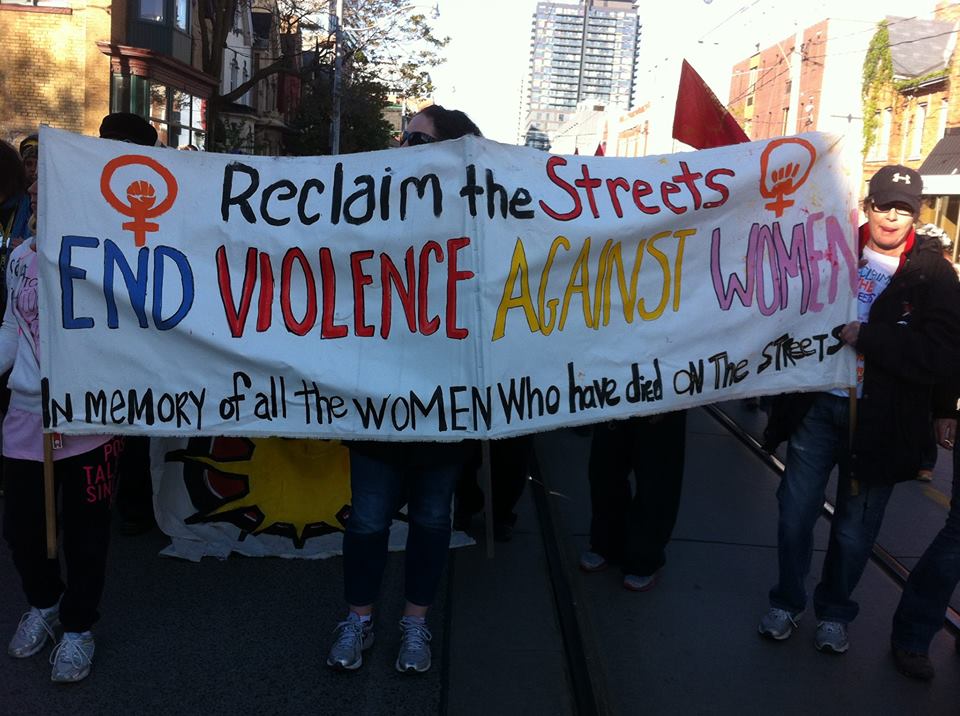
There’s a gap in Toronto.
It starts around Yonge Street, south of Bloor and runs about as east as the DVP. It’s the Downtown East End and it might as well be a pothole for all the attention the city gives it—something to swerve around when it’s directly in front of you, a spatial nuisance. And while you can argue it was historic municipal neglect that created it, ongoing citywide negligence is sure as hell making it worse.
The Downtown East End is an area in crisis, you probably just haven’t heard about it, because, like a lot of young urbanites, you live in the west end. You probably also haven’t heard or aren’t paying attention to what’s going on in the east end because it’s happening to some of the most systematically oppressed people in the community: women.
“But a couple weeks ago when all those women went missing in the west end I shared the police press release on Facebook.”
I remember! I also remember feeling curious about why so many people I knew seemed to be taking interest. Yes, it was jarring to see six women go missing in two days and tempting to try and tether the cases together based on location, but where was this ownership and overnight activism coming from?
Young people may have initially moved to the west end of Toronto because it was cheaper to live there, but that’s not the case anymore. Developers have caught on and condos are creeping in and complaints are rising with them. But the bottom line is the west end is convenient and that’s why we all still live there. It’s not that cheap to be able to pay rent, buy groceries and still go out for dinner, or go out for drinks. We have housing and ownership and through these we have security and the sense that if we needed help we’d be heard. So I think it’s time to admit being able to afford to live in the west end also affords us the right to feel like we’re immune, immune to new and encroaching housing developments, and immune to violence. But it’s this immunity that effectively severs neighbourhoods off and when you live in a city and knowingly lose sight of huge parts of it you become complicit in the systematic negligence now spilling over into your everyday life.
On September 22, 2013, on the front steps of a building at Dundas and Sherbourne, two different men assaulted a woman twice in one night. She was trying to get some sleep. Despite having video footage of the attacks and the identity of the perpetrators, police failed to take any action to warn the community. There was no canvasing, no leaflets, and I don’t recall hearing much about it on Facebook.
Assaults on women are commonplace and prevalent in the Downtown East End and the majority of cases go uninvestigated, sit cold, or are simply not reported by women who feel the police force don’t have their well-being at heart. With the ongoing federal attempts to criminalize sex work and the reinvigorated TAVIS street sweeps planned to begin June 18th and run into the fall it’s not the farthest mental leap to enter that mode of thought.
The emergency shelter system for single women in Toronto currently has 575 beds, supplemented by 35 flex beds, across 11 shelters, across the entire city. Every woman’s shelter in the city operates between 98%-100% occupancy at all times. Beautiful mind or not, these numbers don’t add up. Currently these shelters are the only overnight option for street-involved, homeless, or marginally housed women in Toronto, there are no 24-hour drop-in options. Moreover, the city doesn’t keep stats on how many women are turned away from shelters when they are at 100% capacity, making it impossible to keep tabs on current demand or tally statistics. It also makes it easy for lunatics like Ford to keep claiming everything’s fine.
Emergency housing transfers within Toronto Community Housing Corporation has a wait list of 4 years. Some women face over 20 years of waiting on the TCHC list to be housed, many of those years are spent homeless. Some temporary women’s shelters are being turned into transitional housing by the city, which would be fine if there were housing to transition into, but there isn’t. Women end up staying in transitional housing until the allocated time is up and oftentimes end up homeless again and the additional beds that were available in the temporary shelter model and the safe space provided are also lost. The homeless population of Toronto, like any city, isn’t a static number, and with more women being pushed out of lower income properties as the private market develops, especially in the Downtown East End it’s a damaging solution that saves the city money in the short term but costs lives in the long run.
The wait list for housing in Toronto is decades long and temporary solutions aren’t viable to women as they offer no community support, safety or longevity. The implementation of 24-hour drop-in shelters would provide some much needed respite for women in the Downtown East End and elsewhere.
It’s also not just street-involved women who would benefit, the diversity of women who need the drop-in service alone should provide reason enough for its implementation— youth, pregnant women, Aboriginal women, members of the LGBTQ community, sex workers, women escaping violence, seniors, women with disabilities and women with mental health challenges
A drop-in model allows a minimally invasive intake process, no curfew, fosters a greater sense of community via group and peer led counselling and an opportunity for women in crisis to build vital safety networks. Developing social connections and mutual trust within a community of women improves everyone’s ability to stay safe. Though considered “nothing major” by some, the REOI given by City Council on the feasibility of the creation such drop-ins is a huge push forward and a chance to repair faults in our city.
Lead image courtesy of OCAP Toronto.
____
Katie Heindl is a contributor to Toronto Standard. Follow her on Twitter.
For more, follow us on Twitter and subscribe to our newsletter.














